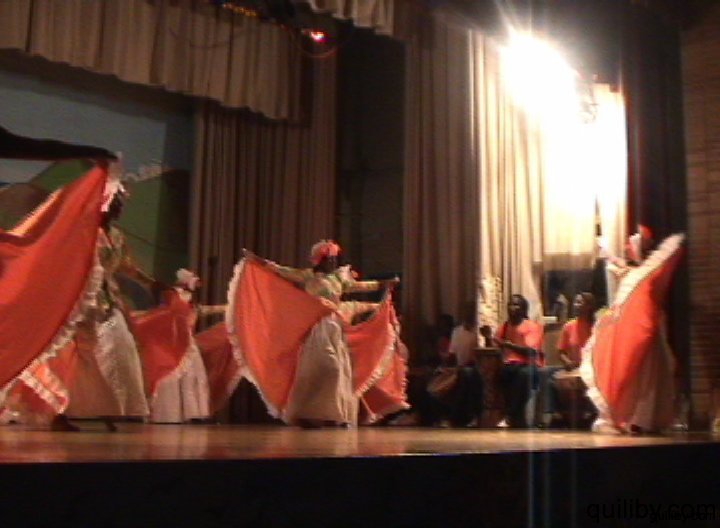The following article was written by Reshma Ragoonath and published in Trinidad Guardian, July 12, 2012.
The phenomenal Joyce Kirton, considered to be the “Grand Dame” of dance in San Fernando, celebrates her golden jubilee in dance and the formation of her dance company, Les Enfants, this month. She has planned a weekend of special events at the Naparima Bowl, San Fernando to commemorate the symbolic occasion. The festivities will begin with a prayer session today at 10 am and will culminate with a dance concert on Sunday at 6 pm. An all day dance workshop has been carded for Friday and a gala awards ceremony on Saturday night. In a telephone interview on Tuesday, Kirton said the celebration is a way of “thanking God for the 50 years at Les Enfants. Thanking him in song in movement and in word.”
Over the years
She extended an open invitation for all dance lovers to be part of the celebrations. Looking back over the past 50 years, Kirton said she is proud of her legacy of dance and of her hundreds of dance students. She said dance began as a hobby but quickly became an all encompassing part of her life. “Why do people like singing? Why do people like anything? I just like dance. This is my way of expressing myself. It was something I was drawn to,” she said. At the age of 19 while attending the Teachers’ Training College she was bitten by the dance bug. “I had some very good teachers at Training College. Beryl Mc Bernie and another English teacher. Between these two women they really turned me on to dance,” she said. As T&T was making its first foot steps into nationhood in 1962 Kirton said she was making her first steps into forming the Les Enfants Dance company. She started with small classes at the St Paul’s Anglican Church, Harris Promenade. “It was a lot of fun, a lot of adventure. Every Independence we would be excited. Children would have been performing in rallies. There were a lot of organisations coming up at that time. The San Fernando Borough Council did a lot of stuff and we were also involved in a lot of their projects.”
Back then, she said, the society was very different. “When people came to see our shows they paid $3 per show and they were filled. Now shows cost $350. We do not have a very big dance audience in San Fernando. People do not support the dance very willingly. They prefer to go to comedy shows,” she said. She lamented that interest in dance has been declining and invitations to perform at functions being with it requests for “jump up and wave” entertainment. “Arts are not being respected. They (people) go for superficial. They do not go for what you produce. When you produce any piece of art it is a piece of yourself, whether it is a painting or performing in a play. You are making a statement about yourself and your country,” Kirton said. She said students at Les Enfants were not only taught movement but also about T&T culture through the art of dance. “Dance is a way to reach an audience, to tell a story. That story may be sad, maybe happy. It might be fearful. You also want to make a comment about the things that go on to your society or keep the culture going,” she said. “We have a very rich heritage and everyone who occupied this country left a story and very often when we are dancing we are telling their stories, the African, the Indian. They all left their mark in society.”
For the original report: Les Enfants
